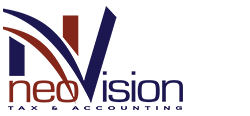Are you currently a business owner? Or do you want to open your own business? Well, as a business owner, you must be prepared to tackle all of those tax-related issues. We are talking about employment taxes, self-employment taxes, and state business taxes. Oh, and let’s not forget about collecting sales tax! Getting started on all of this can be slightly overwhelming. But we are here to help. Today, we are going to share some of the business tax basics for beginners like yourself.
Business Tax Basics for Beginners
3 Steps for Filing Employment Taxes
There are three steps you must follow when filing employment taxes.
1. Know Which Employment Taxes You Must File
It is very important to know which employment taxes you need to file for your business. Most of the time, these taxes include federal income tax, Medicare tax, social security tax, and federal unemployment tax.
2. Deposit Employment Taxes
Once you know which employment taxes you need to file, it will be time to deposit the money.
At the beginning of each calendar year, you will need to determine which deposit schedule you are required to follow. The options are monthly and semi-weekly. The IRS determines your schedule by looking at how much total tax liability was reported on Form 941, line 12, or Form 944, line 9, during the lookback period.
3. Report Your Employment Taxes
The last thing you must do is report the employment taxes you paid to each employee. This is done by filing the required forms with the IRS. You will also report this information on the proper forms when you submit your taxes.
How to File Self-Employment Taxes
You will need to file self-employment taxes if you work for yourself. Self-employment taxes include both social security and Medicare taxes. They do not include income taxes or other taxes.
1. Determine If Your Business Had a Net Profit
A net profit is necessary for filing self-employment taxes. However, even a net loss may require you to fill out forms to deduct your loss from your gross income.
2. Fill Out Form 1040-ES
You will use the prior year’s income to fill out this form. If this is your first year in business, you will need to estimate the income you expect to earn for the entire year.
When estimating, you don’t need to worry about being too exact. If you make less than you thought in one quarter, or more, you can always fill out the form again for the next quarter.
3. Make Quarterly Payments
As a business owner, you will need to make quarterly tax payments. This can be done via mail or through the Electronic Federal Tax Payment System, or EFTPS.
The payment dates are normally, the 15th of April, June, September, and January.
4. File Your Annual Return
A part of your annual return will be Schedule SE for your self-employment taxes. The other forms you will need to file for your annual return will be dependent on how your business is structured. The forms are different for sole proprietorships, partnerships, corporations, LLCs, and S corporations.
Understanding State Business Taxes
State business taxes are different from the taxes you pay to the federal government. You must understand these taxes as well.
Not every state has the same business taxes. Common state business taxes include state income tax, franchise tax, sales tax, and property tax. All states will require you to pay workers’ compensation insurance and unemployment insurance taxes. Some states will even make you pay for temporary disability insurance taxes.
Your accountant or bookkeeper can advise you as to which state business taxes you are responsible for.
What You Need to Know About Collecting Sales Tax
Collecting sales tax can be the most confusing part of running a business. Especially since sales tax varies by state, and sometimes even by county.
We can’t make this extremely simple for you. Even though we would love to. But we can share some tips that will have you understand how you need to collect sales tax for your business. If you even need to.
First, you need to determine if you are selling a product that requires collecting sales tax. Most physical products require the collection of sales tax. Products that are downloadable, like a printable planning calendar are not.
Once you determine whether you have a taxable product, you will need to figure out the sales tax nexus.
If you have a business in New York State and your products are sold from that state, you have nexus there. This means you would collect New York State’s sales tax. However, if you own a business that sells products through Amazon, and Amazon distributes those items for you, your tax nexus is in the state where the items are shipped from. If the warehouse is in California, you would collect California’s sales tax.
Now that you know what sales tax you are collecting, it will be time to register for state sales tax collection. This is fairly simple. Go to the state’s Department of Revenue website. Click on the sales and use tax section and start filling out an account for new business activity.
You may also be required to register for foreign qualification if you are required to collect sales tax in other states.
We understand that business taxes can be difficult to understand if you have never been in business before. Our team is here to assist you in any way we can. Contact our office today to set up a consultation.

